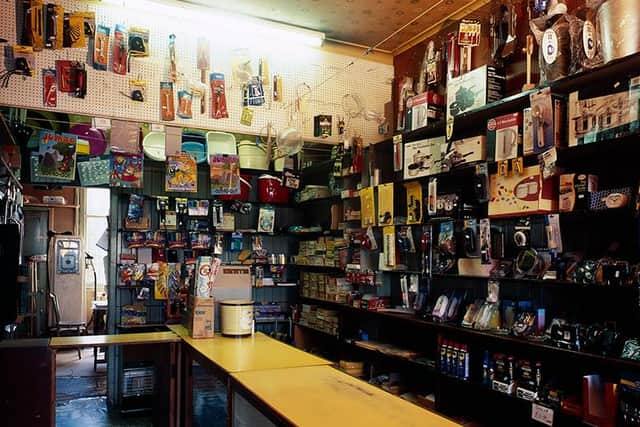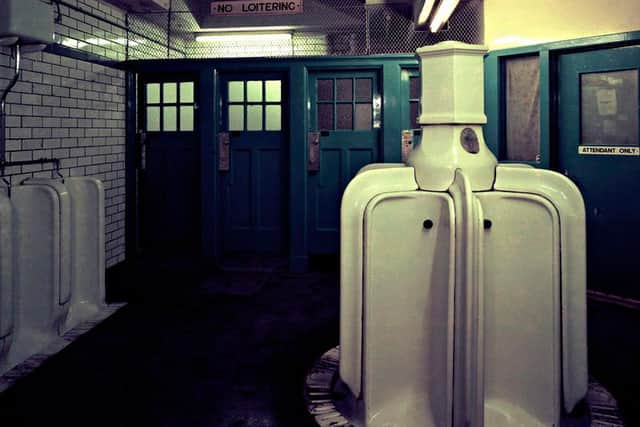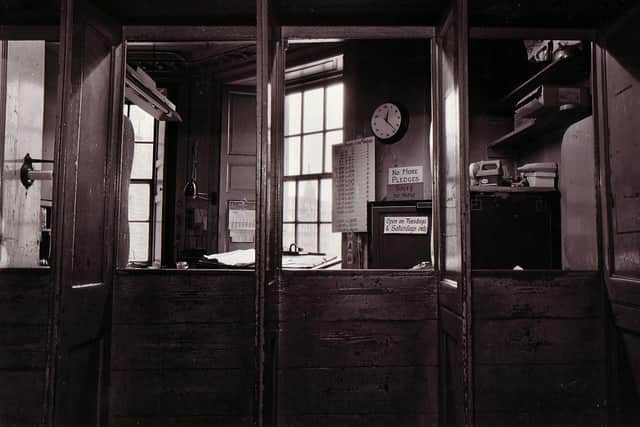Photographer’s unseen archive of forgotten Edinburgh shop interiors to be showcased in major exhibition
The city council is to stage a major showcase of previously unseen work captured by Ron O’Donnell.
A four-month exhibition will showcase his efforts to document the city’s interiors from the 1970s to the present day.
Advertisement
Hide AdAdvertisement
Hide AdFishmongers, launderettes, cobblers, pet shops, barbers, bookstores, pawnbrokers and ironmongers will all be celebrated at the City Art Centre when the show opens in November.


The gallery says the show will document "dramatic shifts” in the city over the past half century, and also recall “lost places and forgotten interiors”.
An ironmongers in Niddrie, a pawn shop in the West Port, public toilets at the Tron Square, a fishmongers in South Clerk Street and an old Co-Op building on Grove Street are among the early glimpses of the exhibition, which will feature more than 50 images drawn from O’Donnell’s archive.
Born in Stirling in 1952, O’Donnell has lived in Edinburgh since he studied photography at the-then Napier Polytechnic. He has been teaching at the now Edinburgh Napier University for the past four years.
Best known for his work in “constructed photography”, O’Donnell is described as a “jester king of contemporary Scottish photography” on his own website.


O’Donnell has been staging exhibitions for 40 years, since a show at the Stills Gallery in Edinburgh in 1982. He has since shown work, including large colour prints of his constructed installations, all over the world, including London, Washington, New York, Amsterdam, Barcelona, Montreal and Paris.
However, all the work in the new City Art Centre exhibition, which is currently entitled The Lost World, will not have been shown in public before. It will cover two periods of time – the 1970s and 1980s, and when O’Donnell returned to documenting shop interiors in 2010.
Advertisement
Hide AdAdvertisement
Hide AdHe said: “The earliest work in the exhibition really just came from me being inquisitive. I had an insatiable desire to be nosy. I found that a camera was like a key to get into places.
“I would go round the city on my bike, turn up at an interesting-looking building and ask “any chance of coming in to take some pictures?’


"That doesn’t really happen now because of things like health and safety, or insurance. But at that time people were happy to let you come and photograph away quite happily. I rarely got turned away from anywhere.
“If anyone asked what I wanted the pictures for, I just told them I was a student working on a project.
"To round the whole thing off, I went back to photograph places that I could remember from when I was a student in the 1970s. A lot of them were still there.”
Exhibition curator Maeve Toal said: ‘We’re really excited about working with Ron on this exhibition, which features photographs of lost or forgotten Edinburgh interiors from the 1970s, 1980s and 2010.


We’re currently developing the exhibition content and it will be the first time that these works will go on show.
"The exhibition will appeal to residents and visitors to the city, who will be able to draw comparisons between then and now, with some interiors having changed beyond recognition.”
Comments
Want to join the conversation? Please or to comment on this article.
